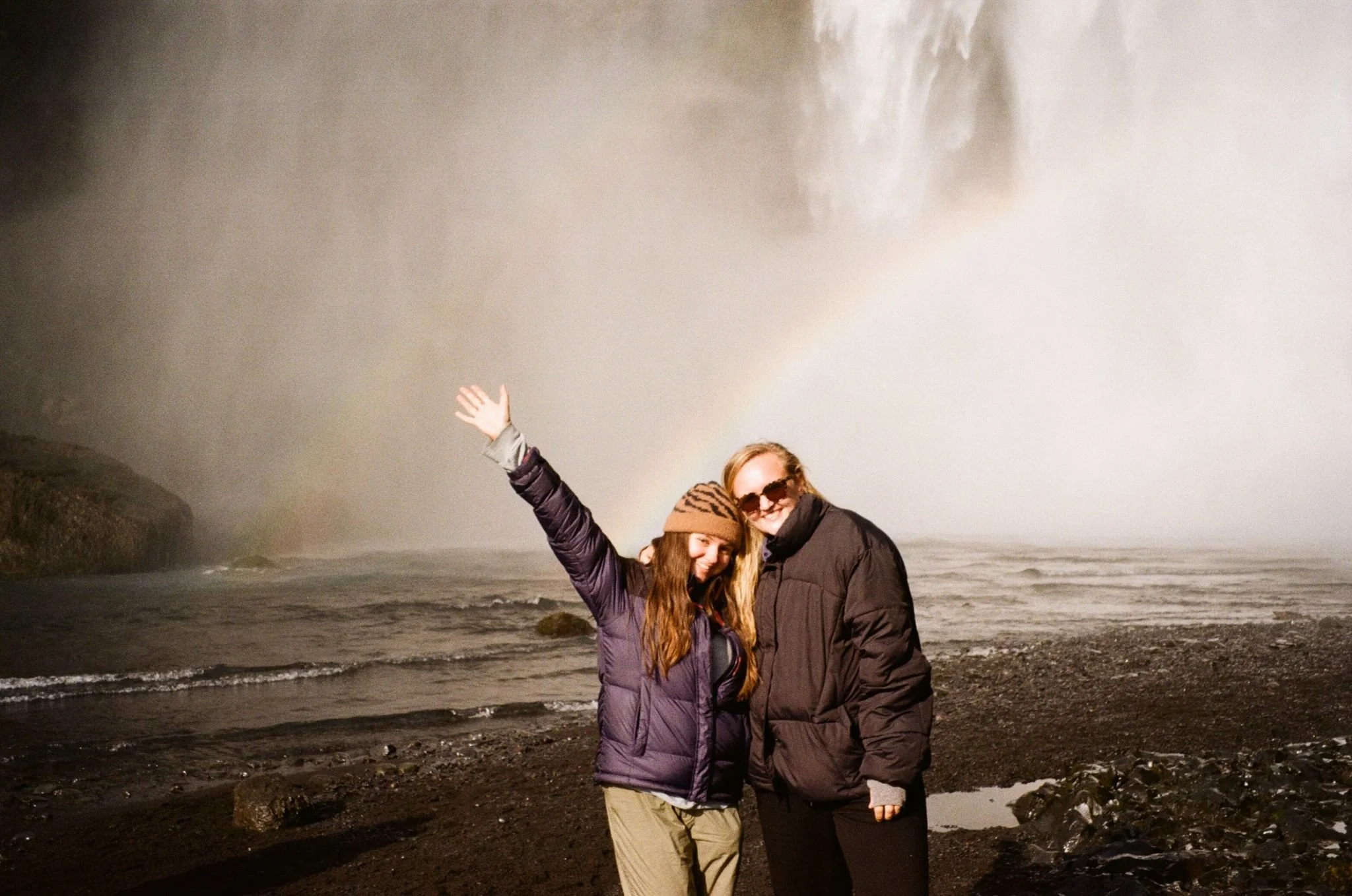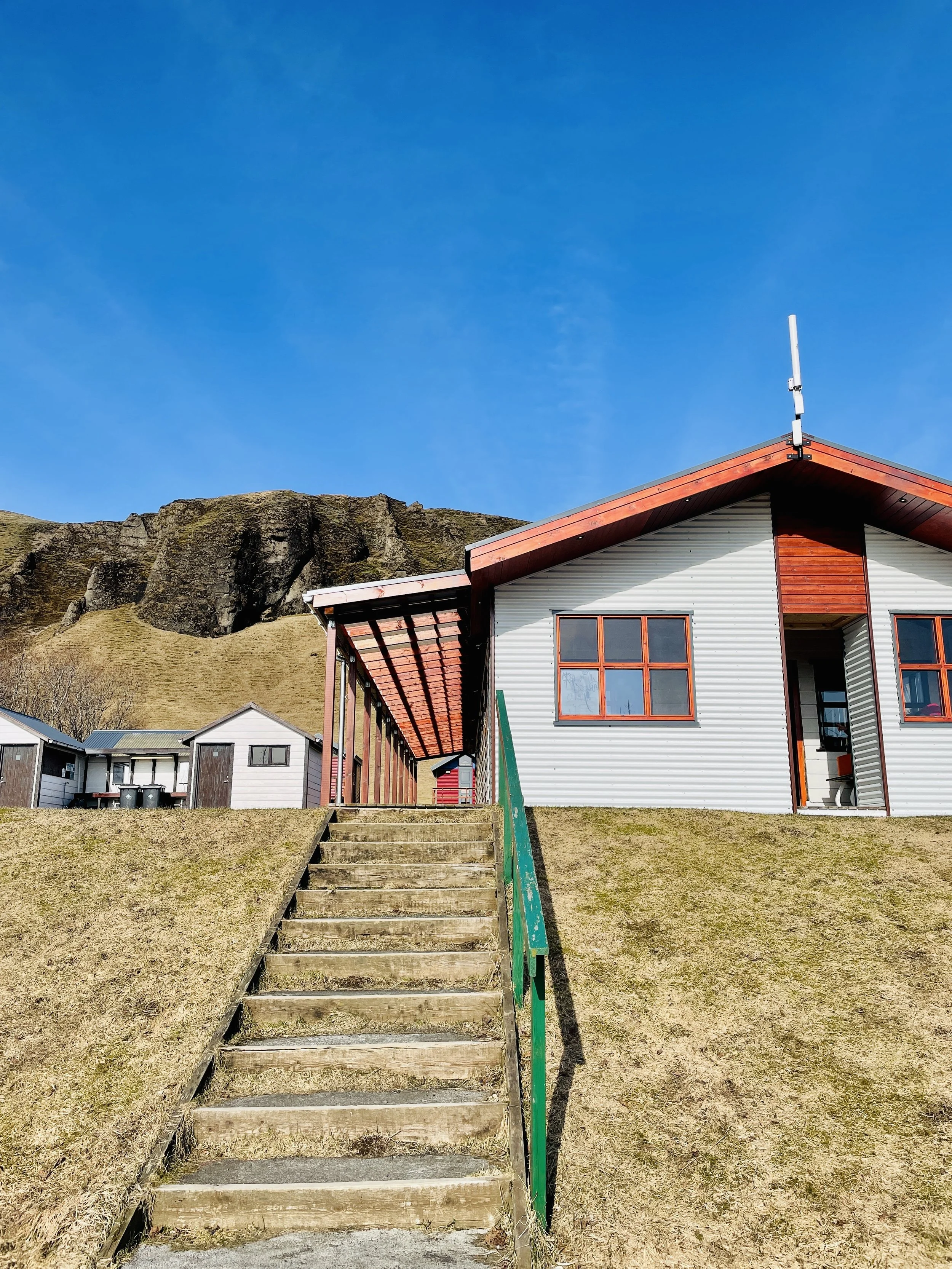A Guide to Visiting Iceland
/Iceland is a country that should be experienced at least once in a lifetime. It’s not every day you’re surrounded by raw, natural beauty and dramatic, un-touched landscapes, that Iceland has. There’s so much to see and do that you’ll need multiple trips to cover the whole country.
Let me paint the perfect picture of our trip.
We hired a campervan, which housed our beds, cooking equipment and luggage. Having the van also meant we were free to roam anywhere we wanted to, with no real schedule or time limit. We parked up in front of heaven-like waterfalls, 2000m tall glaciers and 100 degree hot springs. We enjoyed our meals in front of places that made us think, wow, is this real life?
(shout out to MY sis who took some pics on film!)
In this post I will explain everything you need to know about Iceland. From planning your route, weather, currency, places to eat, language and of course hiring transport.
There is no better feeling than having the freedom to explore a new country, on your time and at your pace. And in Iceland, we most definitely had that feeling.
Planning the perfect trip
We travelled to Iceland on March 29th 2022 and stayed for 5 nights/6 days. We flew with EasyJet straight from London Luton to Keflavik, which is the main International airport in Reykjavik. Apart from the flights there were only two things we had pre-booked, which was a day trip to the Blue Lagoon and our campervan.
I must mention how efficient and modern Keflavik airport is!!! Plus I had never been greeted by such welcoming and happy border control officers.
No word of a lie, I have been making an Iceland bucket list for at least 10 years! Ever since the Blue Lagoon went viral on Instagram, I knew I was destined to visit. Skogafoss, Gullfoss and Geysir were also on my list. See my post 12 best places to visit in Iceland for more inspo!
We booked our campervan with Happy Campers which I found to be the highest recommended company online. A member of the team greeted us at the airport in one of their vans, and drove us to their Happy Campers hub, a short 10 minutes away. We sorted out the paperwork for insurance, extras etc. and were given heaps of info on Iceland. We were given a tour of the van, instructions on how to use the built in stove and how to assemble the beds. The guys there couldn’t have been more helpful!
Campsites
On the Happy Campers website they have a very useful guide which has all of the campsite locations. Sites that are open all year round, during the winter and during the summer. I’ll link it here: Iceland campsite locations.
We stayed at four different campsites which I had briefly planned ahead, we needed sites that were open during the winter and in close proximity to the places we wanted to see. We stayed at Thingvellir Campground, Camping Selfoss, Kirkjubaer Campsite (2 nights) and our final night at the Happy Campers hub in Njardvik.
Route
Day 1: From the Happy Campers hub, we went straight to the Blue Lagoon and spent the majority of the day there. We planned for the following day that we would be exploring Thingvellir National Park which is only an hours drive from the lagoon. We managed to arrive at the Thingvellir Campground just before sunset. Luckily we were already showered as there were limited facilities. There is only a WC at this campsite, however there is a coffee and gift shop, which was open when we woke the next morning. Prices for one night: ISK 1,300 (£7) per adult, 650 (£3.50) per senior (67+), free for ages 0-17.
Day 2: After exploring Thingvellir National Park, our next stops were Geysir hot springs and the Gullfoss waterfall. At both locations they had wonderful visitor centers which served a variety of drinks and hot/cold meals. Not many miles were driven this day as our next home for the night was at Camping Selfoss, only a 40 minute drive from Thingvellir. This campsite had a kitchen, showers, toilets, wifi, a swimming pool and washer/dryers. Prices for one night: ISK 2,500 (£14) per unit plus 1 person, ISK 1,500 (£8.50) extra per person, free for ages 0-15.
Day 3: From Camping Selfoss, we explored the little town and found a wonderful breakfast spot called GK Bakari. Our plan for the day was to waterfall hop from Seljalandsfoss to Skogafoss, and to finish the day at Reynisfjara black sand beach. All locations had facilities and eateries. From the beach we headed to the Kirkjubaer Campsite which was an hours drive away. The further we drove from Reykjavik, we realised how sparse the winter campsites were. We were very thankful to find Kirkjubaer, so much so we stayed there for 2 nights! This site had a kitchen, showers (chargeable) and toilets. The most modern and clean we had found so far! The latest we could check in was at 6pm - we didn’t find this out until we very calmly turned up at 5:45pm. I don’t know what we would have done if they were closed! Prices for one night: ISK 1,600 (£9) per adult, free for ages 0-12.
Day 4: Our plan for this day was to explore the Svinafellsjokull Glacier and the Svartifoss waterfall, both around an hours drive away from the Kirkjubaer campsite. It was great knowing that we had a reliable campsite to come back to that evening. The Svinafellsjokull Glacier was the furthest point away from Reykjavik that we went to - 360km one way to be precise! Once we were back at Kirkjubaer, we noticed a fab restaurant just down the road called Systrakaffi. We fueled up on pizza and local beer, and even the northern lights made an appearance!
Day 5: We knew that this day would be our turnaround point to head back to Reykjavik. To break up the 4 hour drive, we decided to stop again at the Reynisfjara black sand beach to have lunch, and to hide from the rain. Unfortunately it finally caught up with us, but luckily we hadn’t seen a single drop all week up until this point. After completing the treacherous journey back to the Happy Campers hub, we showered and found a wonderful Italian restaurant just 10 minutes away in Reykjanesbaer, called Fernando’s.
Day 6: We had to wake up by 6:30am to empty the van, as our flight back to London was at 9:30am. We posted the keys through the main door at Happy Campers and ordered a taxi to the airport.
Weather & best time to travel
Iceland has something to offer for each month of the year, so there isn’t a bad time to travel. April-May and September-October are off peak months, which means cheaper prices and less tourists. The roads are clear, longer daylight hours but less chance of seeing the Northern lights. December-February is mid-winter, sometimes only 4 hours of daylight, however that means a guaranteed chance of seeing the Northern lights. Planning a road trip in these winter months can be tricky as some roads will be blocked with ice and snow, plus not many campsites will be open. June-August are the most popular months as the weather is warmer, however prices can be much more expensive. We travelled to Iceland at the end of March - the roads were clear, however there was still plenty of snow on the mountains. We even saw the Aurora Borealis on our last night! Temperatures dropped down to the minus during the night, although when the sun was out during the day, it actually felt pretty warm! I highly recommend the month of March for your travels to Iceland!
Language, Currency & Cost Breakdown
The native language in Iceland is Icelandic, however there is no barrier here. Every person we met had more than perfect English which made it easy to communicate and ask questions to the locals.
The currency used in Iceland is the Icelandic Króna (ISK). 1 GBP averages around 170 ISK. There’s always that question asked before travelling to a new country ‘do we need cash?’ and for Iceland, the answer is no, not at all. We used our contactless cards for everything - car parking, restaurants, gas stations, everywhere!
You may have read that Iceland is in the ‘top 10 most expensive countries to live in’, if not the top 5. Rubbing shoulders with Switzerland, Monaco and Norway. However, in our experience we didn’t spend a crazy amount! Here is a quick spending breakdown of our 6 days in Iceland:
Flights £100pp return, London - Keflavik, including baggage and seat selection
Campervan £600 - we hired a 5 sleeper for 5 days (4 people)
Gas £150 - we filled the van up twice
£58pp Blue Lagoon - all day pass
£7-£15pp per night at campsites - some charged a small fee for showers/amenities
5 nights for 4 people in hotels would have cost us way over £2000, plus we would have needed transportation on top of that. If you’re only staying in Reykjavik then you can find reasonably priced hotels. During our trip we barely saw the capital - all the best attractions are out of the city.
Restaurants, Cafés & Supermarkets
The van we hired from Happy Campers had a fridge, sink and a stove built in, which made cooking on the road very easy. During our first day in Iceland, we went to the supermarket and bought breakfast and lunch essentials including bread, milk, cheese, cucumber, salad, cereal, biscuits, crisps etc. This one and only food shop kept us going for the entire week. To our surprise at every tourist attraction, there was some sort of coffee shop or restaurant. The visitor centers at Reynisfjara black sand beach, Gullfoss and Geysir were our favourites!
The food shop for snacks and essential items cost us around £60 for 4 people. Coffee and drinks on the go cost between £3-4. Meals at the restaurants and cafés were around £10-15 per person. There are some super expensive and Michelin star rated restaurants in Iceland that can be added to your list - if they coincide with your budget of course!


















